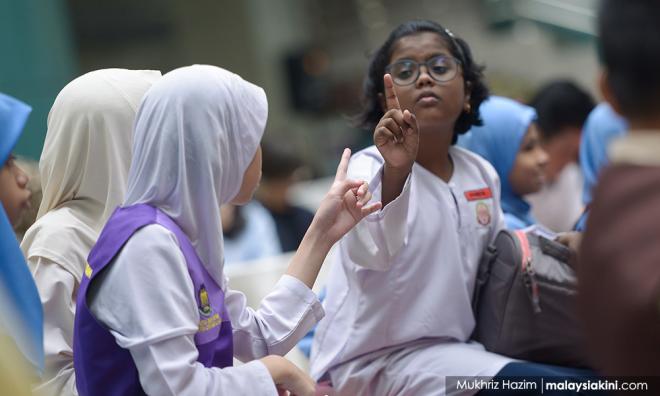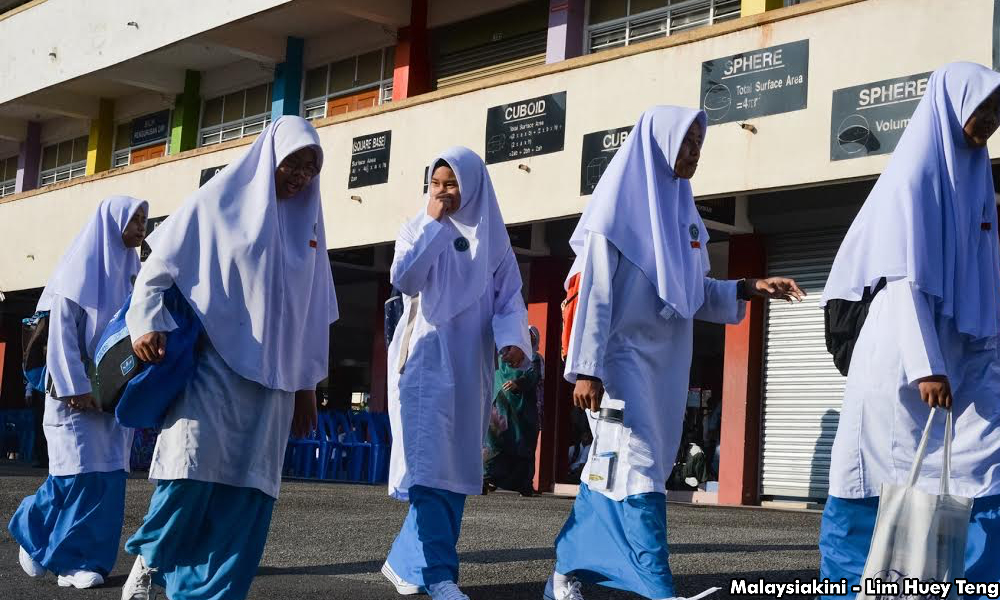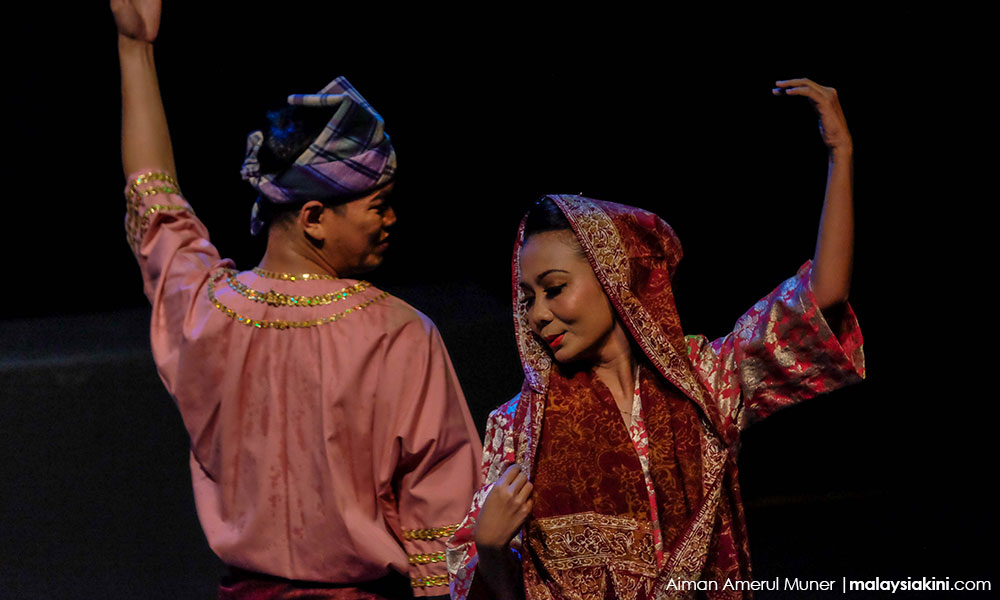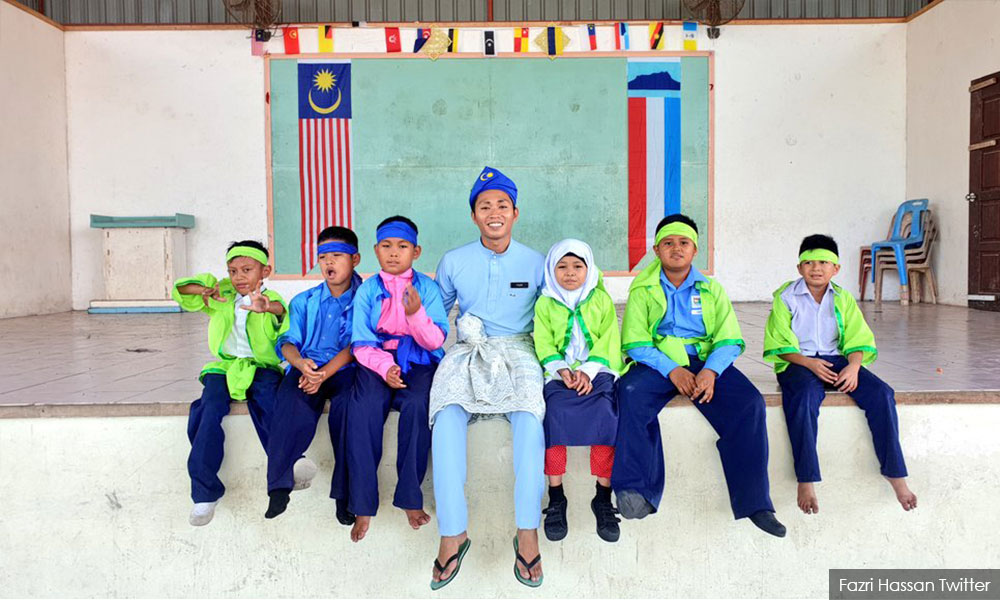
I was walking by the corridor of a public school during one of my theatre coaching sessions recently when I spotted a few female students in shorts. The girls looked Malay and so I was pretty shocked.
You see, to the best of my knowledge, these days Malay girls aren’t allowed to wear shorts during Physical Education (PE). Most public schools encourage Muslim students to cover their aurat (modesty).
So when the teacher in charge accompanied me to my car at the end of the theatre rehearsal, I decided to ask her.
“There is no compulsion in our school. The girls can wear either school shorts or school track bottoms,” the teacher replied.
“How about school uniform?” I sought clarification. “Do the Muslim girls wear baju kurung and headscarves as their school uniform?”
“They can wear baju kurung or pinafore; wear a tudung (headscarf) or not. Like I said, there is no compulsion really,” she answered.
I was quite delighted with her response.
I remember having to console my daughter who did not want to wear a headscarf when she was enrolled into a secondary school in Kulim, Kedah a few years ago. The school had made it compulsory for all female Muslim students to wear baju kurung and headscarves.

During PE lessons, while the non-Muslim girls were free to wear shorts, my daughter and other Muslim girls had to stick with their headscarves, long-sleeved t-shirts and track bottoms.
It did not end there, for when my daughter went to her school to collect her SPM certificate, she was treated badly by her teachers for not covering her hair.
And it did not only affect the Muslim students, a former teacher at my daughter’s school once told me how she had a tough first month showing up at school without a headscarf.
She was then "forced" to cover her hair by the principal and other teachers. According to them, it was the school’s culture and anyone wishing to be part of it should also embrace the culture.
Shaping a school’s culture
I was intrigued about the culture practised at the school where I was invited to coach. Apart from the freedom given to its Muslim students to choose their school uniform, I was impressed with the students, who were very confident, outspoken and bright.
I’ve been invited to a few schools and sad to say, I’ve only seen these great qualities in international and private school students.
Also, not many public schools would invest in performing arts as this particular school had done.

So I decided to ask the teacher walking by my side.
“We have a great principal,” she replied. “Our principal encourages our students to be themselves and have safe platforms to express themselves. I’ve been in this school only for a few years now but I’ve been told that our school has been very lucky to have a series of great principals just like our current one.
"And the teachers, well we share the principal’s vision.”
The teacher’s answer brought joy to my heart. I find happiness in knowing that there are still schools with great principals who take pride in shaping the culture of their schools in order to create empowered youths.
The students of the school are truly blessed to be nurtured in such a wonderful environment created by their principal and teachers.
A good principal can make a school a community
If a leader is the main role model for an organisation, a principal is the main role model for a school. Everything a principal does - his or her statements and philosophy, reactions to key events, energy and interaction style - influences the school culture in a powerful way.
You see, teachers, administrators and students enter school with their own culture and beliefs about education. A good principal will make sure those beliefs and culture align with the ones the principal wants the school community to hold.

A great principal will appeal to people’s emotions, values, and the deeper needs that motivate them. The headmaster will create a safe space for the growth of the students, holding them to high expectations academically while continuously encouraging students to have a sense of belonging and sharing a collective identity with the rest of the school members.
The headmaster will nurture the teachers and staff in order to build a tight-knit community for the students – a community that will be an asset to the nation.
Likewise, school principals who are developing solid school cultures, one which aligns with the spirit of Malaysia, should not bow down to pressure from others.
Importance of choosing the right principal
It is not easy to achieve the perfect balance of a well-nourished learning environment with motivated teachers, encouraged students and involved parents. But with the right principal who has the right vision and the right culture, the possibility of achieving just that is pretty good I’d say.
I’ve dealt with many public school principals throughout my children’s school years, and I found many of them (if not all) confining themselves to their offices, defensive of teachers’ misbehaviours, deliberately ignoring parents, playing favourites, and not interested in building a strong school culture.

I think the time has come for the Ministry of Education to place priority in selecting the right principal to lead our schools.
Selection criteria should include interview sessions with candidates to ensure they have the right vision, values and capacity to bring forward a positive culture to our schools.
Teachers and vice-principals should not be promoted to lead schools simply because they have served the Education Department for a period of time, neither should they be promoted because they have good "connections" within the department.
At the same time, principals who are already leading their respective schools but are lacking in their cultivation of a positive culture, should be taken out from a school environment and given a desk job at the department instead. - by : FA ABDUL, Mkini


Delightful read.......just made my day...
ReplyDelete